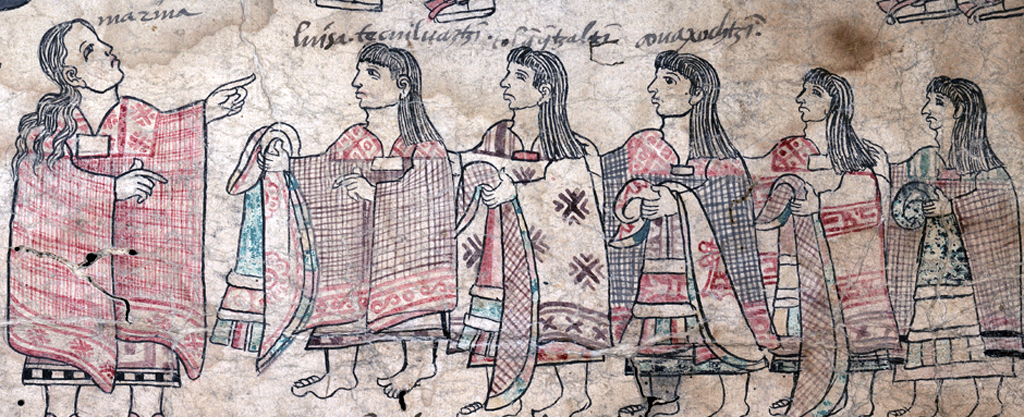
Description
Students will learn about how Indigenous and Spanish women navigated Spanish colonization and patriarchy in Latin America. This unit explores women’s agency through the figures of Malintzin (Malinche), Sor Juana Ines de la Cruz, and Catalina de Erauso.
Date Range(s): 1500-1700
Countries: Mexico; Chile; Peru; Spain
Course Subject(s): Indigenous Studies; Latin American Studies; Women & Gender Studies; World History Studies
Topic(s): Colonialism; Indigenous Resistance; Gender; Malintzin (Malinche); Sor Juana Inés de la Cruz; Catalina de Erauso; Hernán Cortes
Teaching Time Frame: 4, 90-minute lessons
Guiding Questions
- How were women important in the history of Latin America?
- How did the encounter between Europe and the Americas take place?
- How did Mesoamerican Indigenous women address/confront the Spanish colonization?
- How did women defy gender identity during the colonial period in Latin America?
- How did women navigate the complexity of gender rights in colonial Mexico within the Catholic church?
Supporting Questions
Lesson 1: Why did Europeans start exploring the globe beyond their usual routes? How did Europeans and Indigenous people interact when they encountered each other? What were the consequences of the European expansion?
Lesson 2: What was the importance of language and translation in the colonization of the Aztec empire? How did women adapt to the changes imposed by the Spaniards? How did they resist them?
Lesson 3: What gender rights did people have access to under the Spanish kingdom during the 17th century? Were women allowed to participate in war as soldiers? Under what circumstances?
Lesson 4: Why did women become nuns in colonial Mexico? What were some of the benefits and challenges of religious life? What access did women have to “freedom of speech”?
Summative Activities
Students will create a podcast where one of the three women studied in this unit will be interviewed:
- In teams, students will generate three questions that they would like to ask her to show her importance in her specific time period. They write the answers to those questions based on what they learned on this unit.
- Then, they think of two other characters (they may be fictional but based on historical facts) that may be relevant to that woman’s story and come up with two questions for these characters. They will think about possible answers for those questions, too.
- Each student will represent each character in the podcast. Characterization, creativity and correct use of historical terms will be considered.
Relevant Teaching Standards
TEKS Guidelines
- World History
- (c)-(6)-(A) – The student understands the characteristics and impact of the Maya, Inca, and Aztec civilizations. The student is expected to compare the major political, economic, social, and cultural developments of the Maya, Inca, and Aztec civilizations and explain how prior civilizations influenced their development.
- (c)-(6)-(B) – Explain how the Inca and Aztec empires were impacted by European exploration/colonization.
- (c)-(7)-(A) – The student understands the causes and impact of increased global interaction from 1450 to 1750. The student is expected to analyze the causes of European expansion from 1450 to 1750.
- (c)-(7)-(B) – Explain the impact of the Columbian Exchange.
C3 Framework
- Geography
- D2.Geo.6.9-12. Evaluate the impact of human settlement activities on the environmental and cultural characteristics of specific places and regions.
- History
- D2.His.1.9-12. Evaluate how historical events and developments were shaped by unique circumstances of time and place as well as broader historical contexts.
- D2.His.11.9-12. Critique the usefulness of historical sources for a specific historical inquiry based on their maker, date, place of origin, intended audience, and purpose.
- D2.His.14.9-12. Analyze multiple and complex causes and effects of events in the past.
Lesson Links
Lesson 1: The Age of Exploration
Lesson 2: Malintzin: Indigenous Women Discover Spain
Lesson 3: The Lieutenant Nun: More Than Catalina, More Than Alonso
Lesson 4: Sor Juana Inés de la Cruz: Obedience and Rebellion from the Convent
Downloads
Unit (PDF) | Primary Sources & Editable Unit (ZIP)
Rights Statement
Creator(s): Cinthia S. Salinas, Department Chair, Department of Curriculum and Instruction & Maria Jose Ramirez, Graduate Student, Department of Curriculum and Instruction
Date: 2020-05
This unit is under a Creative Commons Attribution-NonCommercial-ShareAlike 4.0 International Public License (“Public License”). This license lets others share, remix, tweak, and build upon the work non-commercially, as long as they credit the creators and license their new creations under the identical terms.
